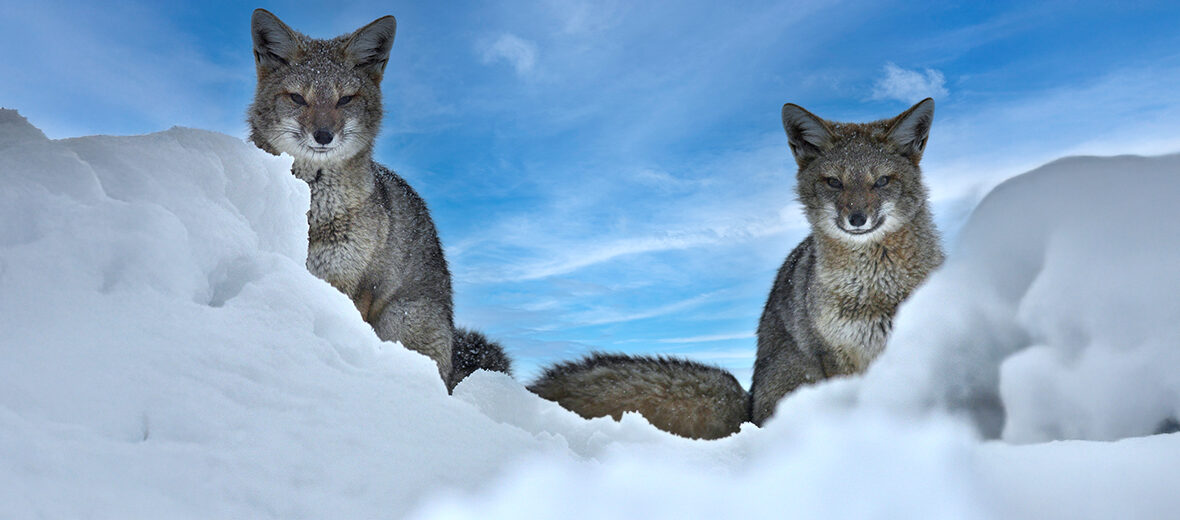
The South American gray fox, aka chilla, Patagonian fox, or zorro gris, hails from the southern parts of Argentina and Chile, and mostly Patagonia. They are part of the Canidae family, which includes dogs, coyotes, foxes, jackals, and wolves, to name a few. These foxes are threatened by hunting and trapping, for their pelts. However, these foxes are abundant enough to be listed as Least Concern. Their population trend is listed as stable, for now.
First the Stats…
Scientific name: Lycalopex griseus
Weight: Up to 12 lbs.
Length: Up to 43 inches, including the tail
Height: Up to 18 inches, at the shoulders
Lifespan: Up to 13+ years
Now on to the Facts!
1.) They were introduced to the Falkland Islands in the late 1920s to the early 1930s and are still present in very large numbers on Beaver and Weddell Islands, plus several smaller islands.
2.) These foxes were also introduced to Tierra del Fuego in 1951 to control European rabbit populations.
3.) The South American gray fox tolerates a range of habitats including the warm, arid scrublands of the Argentine uplands to the cold, arid Patagonian steppe, on over to the forests of southernmost Chile.
4.) Mice, rats, gophers, chinchillas, guinea pigs, birds, insects, arachnids, bird eggs, reptiles, fruit, and carrion (dead animals) are all on the menu.
5.) They are mostly solitary.
But wait, there’s more on the South American gray fox!
6.) These foxes are crepuscular (active at dawn and dusk) and nocturnal (active at night).
7.) Females undergo up to a 2 month gestation (pregnancy) that yields up to 4 kits.
Did you know…?
When food is plentiful, a gray fox will cache its food to eat at a later time.
8.) They sometimes venture into human settlements in search of chickens and sheep.
9.) Seeing as they also eat fruit, they are important seed dispersers that aid in the growth of plant life.
10.) Mountain lions and jaguars prey on these foxes.
Now a Short South American Gray Fox Video!
Be sure to share & comment below! Also, check out the Critter Science YouTube channel. Videos added regularly!

Want to suggest a critter for me to write about? Let me know here.
Some source material acquired from: Wikipedia & IUCN
Photo credit: Gabriel Barrera Maffioletti



